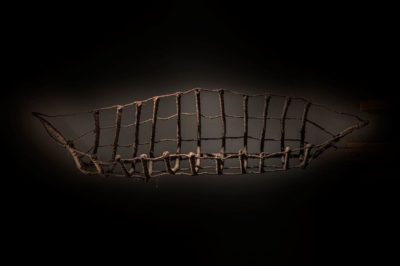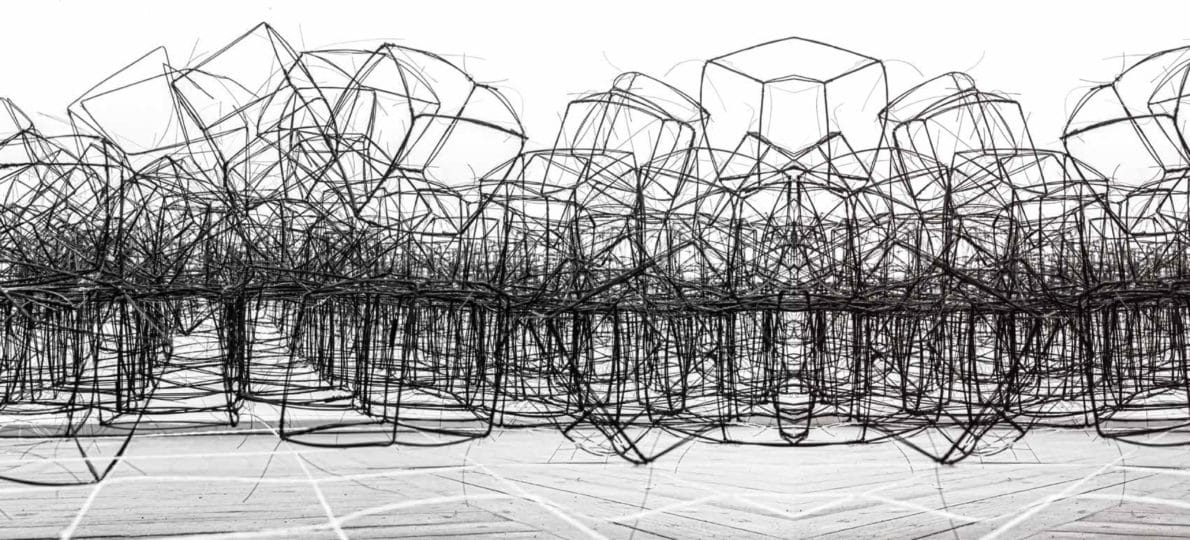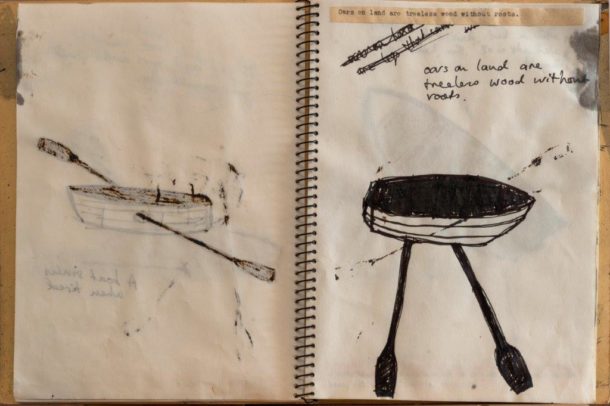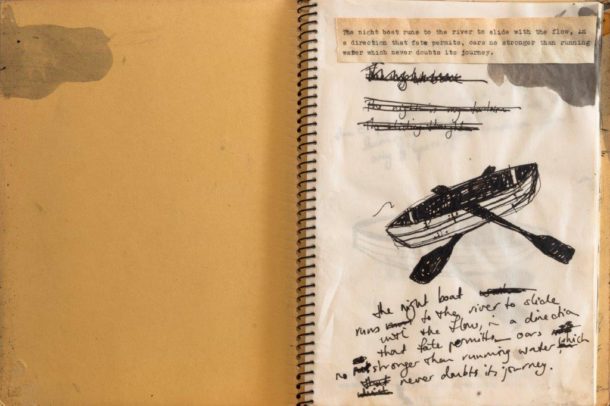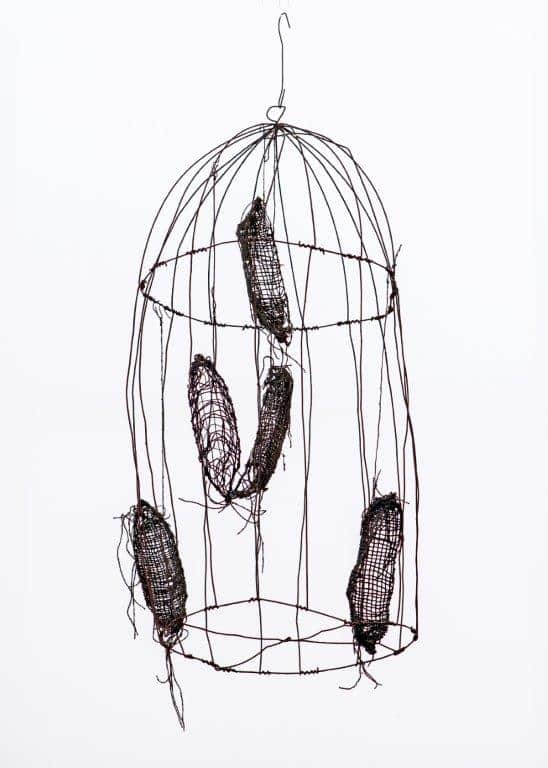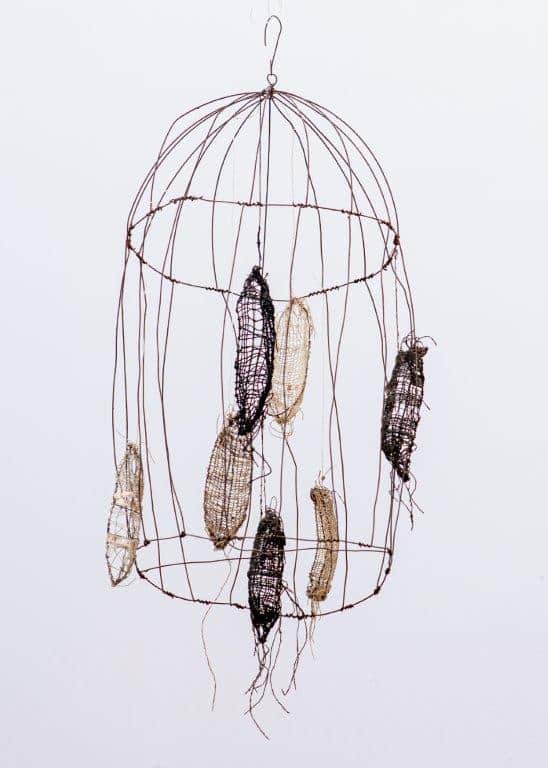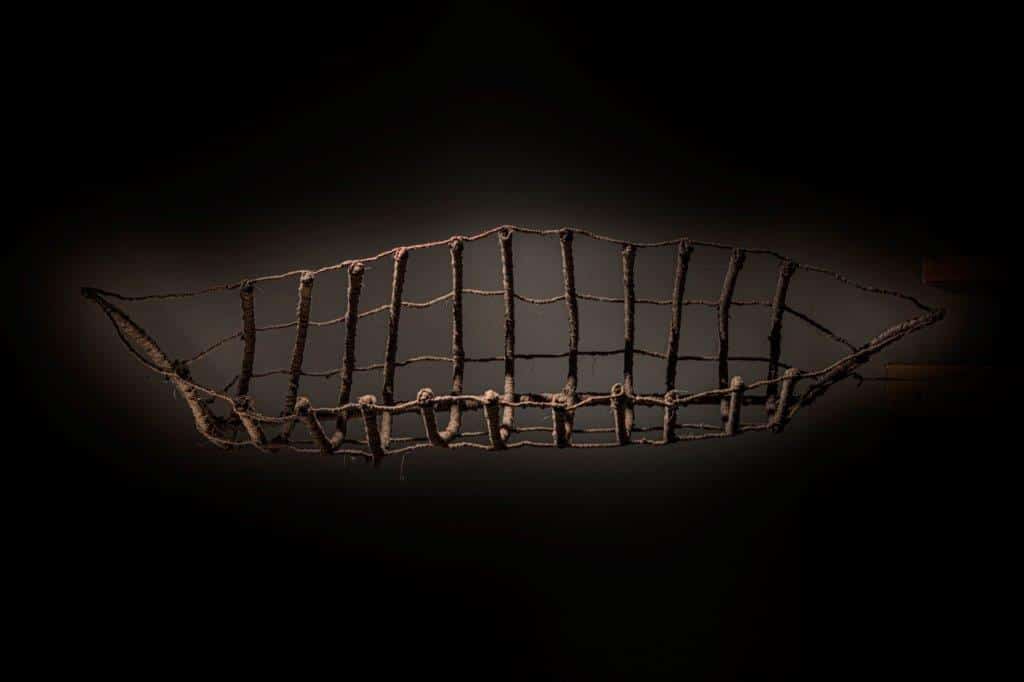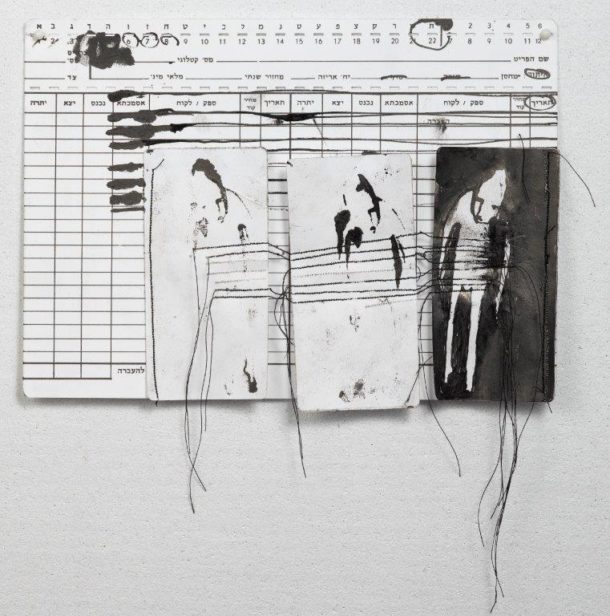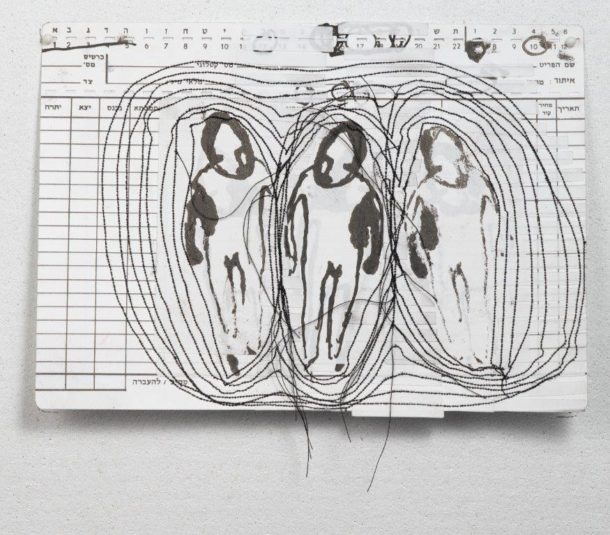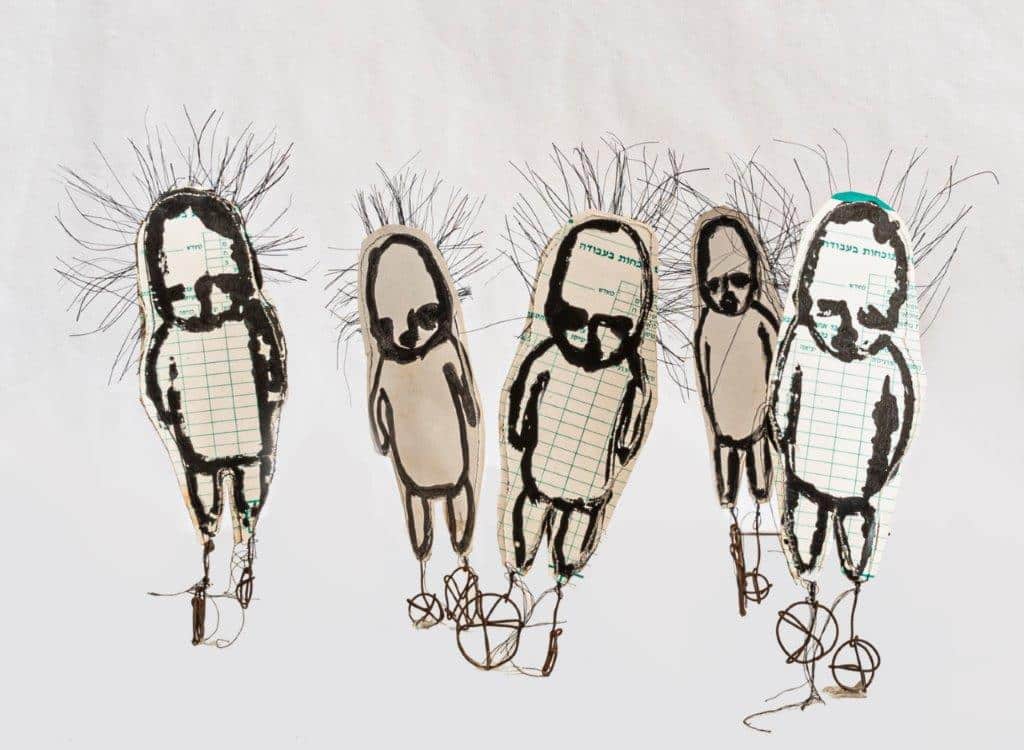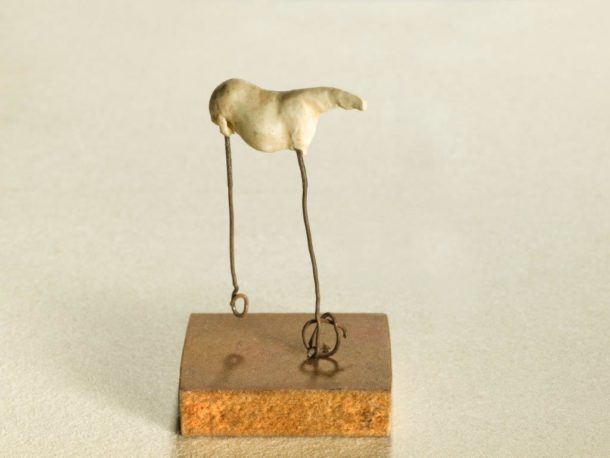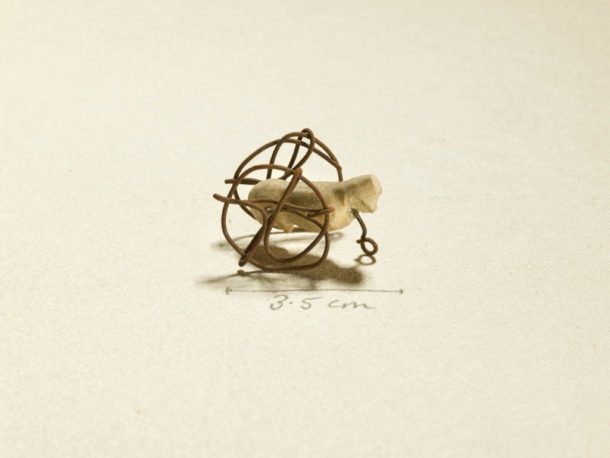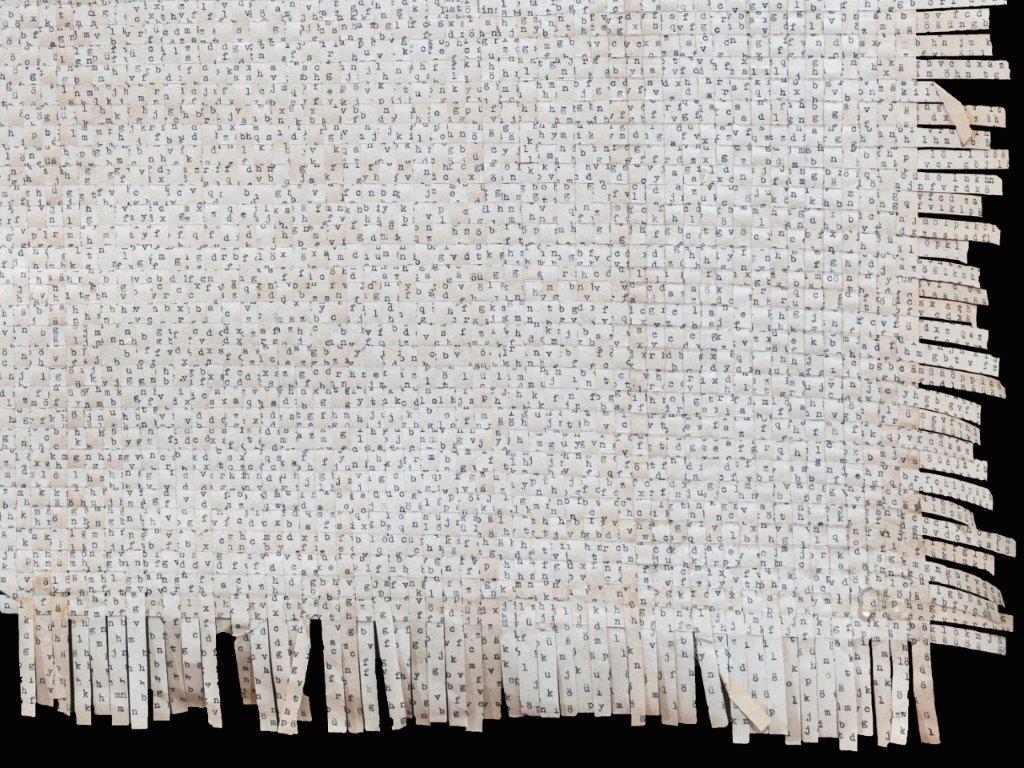The exhibition ‘Ocean’ is an invitation to a journey into the consciousness - of the artist and of the spectators as well - wandering through a world of conjectures, unfinished processes, silences, endless repetitions, the presence of the void; an invitation to shifting perspectives - from close-up, from afar, through openings, and into the darkness.
Extending throughout the entire museum, the exhibition presents works by Linda Hufnagel (born in Melbourne, 1962): sketches, objects, and installations created between 1998 and 2010. In 2011 Hufnagel took an unusual step and closed the door to her studio, to explore the world with her husband. Their journey began in Africa and continued by sailing around the world in a Catamaran. Six years later, they returned to Israel and settled in the Arava.
The name of the exhibition ‘Ocean’ encompasses Hufnagel’s world of concepts – space and time, humanness, infinitude, and nature. Her works follow the place of humans within nature; their ability or inability to adapt, cope, respond to, and express nature’s powerful impact on our inner world. The splendour of the ocean, its unendingness and depths are sources of wonderment for her, and that was the inspiration for ‘The Ocean’ – an epic, large-scale work created with the output of a typewriter. Printed paper was cut into thousands of strips which intermingle to form a kind of tapestry. The words are the artist’s words, her deliberations and curiosity about the ocean’s depths and the insights they generate. She uses words and letters detached from each other to assemble a flexible tapestry that must be decoded.
In the series ‘The Raft’, Hufnagel created large rafts with special, highly delicate materials. Each raft consists of 700 cubes and its size fits the proportion of a passenger reclining on it, but because the material is fragile and not built to last, it is clear that the passenger must abandon the raft rapidly because it is fated to sink. This creates a paradox: on the one hand – a raft, and on the other a predetermined failure. The word ‘raft’ is associated with the ocean, space, and freedom, and thus obtains a new meaning here. The fragile threads which appear and reappear in the installation create lines of longitude and latitude, although their significance is not that of a net or trap, but to provide direction.
We also encounter the paradox of temporality in the series of works ‘Lacuna’. The word ‘lacuna’ is by definition paradoxical, since it expresses a deficit, a flaw, something lacking. From the outset, the large sailing ships are flawed; made of threads and fabric, they are not seaworthy and cannot bring passengers to safe haven. And so in ‘Lacuna in cages’, part of that series, little boats are trapped in barbed wire cages and unable to set sail.
Space is not only a recurrent motif in the works inspired by the ocean. In the series ‘There’s a line’ Hufnagel explores evolution. In a series composed of hundreds of cards, she examines the question whether humanity is driven by cultural development, or whether it flourishes from the surrounding physical environment. Humans’ adaptation to their environment is so absolute that, instead of ensuring continued development, it causes them to destroy themselves – taking away their freedom to flourish.
Destruction of that kind is also reflected in the series of works titled ‘The Horse is Dead’. Here, Hufnagel dismantles elements of freedom and space. Inside transparent boxes she encloses horses which long for the horizon. Deprived of their purpose in life, the horses seem broken and disintegrating. The artist has taken away and shattered their equine identity, creating an image of destruction and calamity.
The exhibition engages with space and time, and the endless, metaphorical space of the ocean confronts the physical space of the museum. Use of the museum’s space enriches the dialogue between the observer and the works, imbuing them with depth. But like the ocean, the exhibition also has its inner secrets. Not everything is visible to the eye. In order to identify one of the rafts, we have to look through crevice in the wall or switch on a torch: only then can we see what lies concealed at the end of an infinite tunnel.
Curator: Nirit Dahan
Exhibition Initiative: Dr. Dalia Manor
Evgeny Shvartsman
Be'er Sheva municipality
Kivunim
Ministry of Culture and Sport

